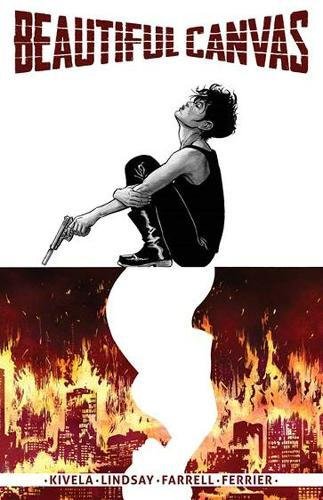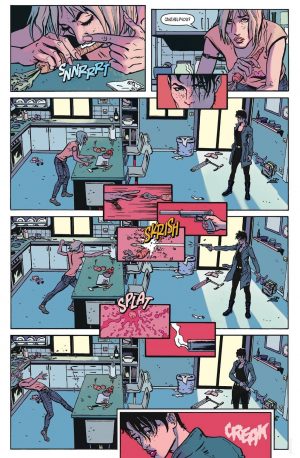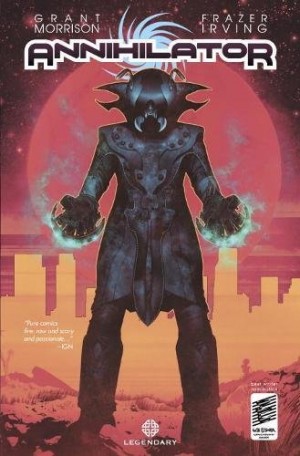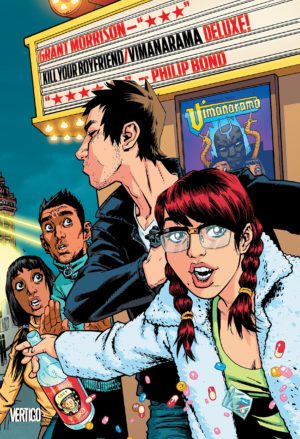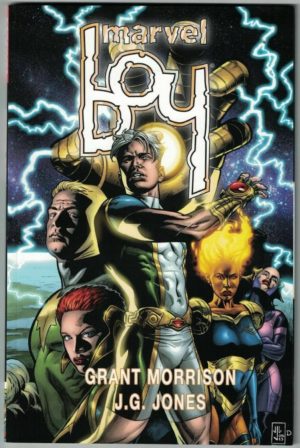Review by Frank Plowright
Beautiful Canvas mixes all the right ingredients for a first rate crime thriller, but doesn’t make it to the finish line because Ryan K. Lindsay tries too hard and ends up vastly inflating something that would have been better kept simple and atmospheric.
Events begin with a conversation between hitwoman Lon and obnoxious billionaire Milla, for whom she takes on hits. Milla has a new target and Sami Kivelä’s impressive sample page shows that assignment being carried out. However, when it comes to killing the infant child on the premises, Lon has a crisis of conscience, and instead makes off with him. That all works very nicely. Milla’s an amoral specimen who enjoys torturing people, and sends a photographer around after her assigned hits to create art from the resulting scene, which is whimsical, but not too far removed from the eccentricity of a James Bond villain. It adds colour, although expounding her theories of art confirms her as a crashing bore. Lon being haunted by the ghost of a little girl is fine also, as tormented killers have a greater presence, and her girlfriend Asia is sympathetic. The introduction of super powers, however, shunts something with the neat, enclosed parameters of a character-based crime story into anything can happen territory. There’s very little about the basic story needing super powers, and making it bigger doesn’t make it better. We also have to contend with the hyper-reality of Lindsay’s dialogue, where it’s never enough that people speak or explain where necessary. He imposes character clumsily, people spouting hollow soundbites. He even calls himself on it at one point – how very meta – but doesn’t stop. Right at the end he notes a character is overthinking. Yeah.
It’s not that the ideas associated with the superheroes are bad, they’re just forced into the wrong story because Lindsay wants to make a bigger impression, everything screaming self-awareness, yet reading like a Grant Morrison pastiche. That good impression is stolen by Kivelä’s unpretentious art, everything clear, everything solid and everything appealing. He incorporates smart visual effects, draws attractive people, and the vibrant colour of Triona Campbell is the cherry on the cake.
As pages turn, the scenario keeps escalating and the smug dialogue continues to a finish that doesn’t work because Lindsay presents the one in a thousand sequence of events rather than the one in two. There’s honestly more fun in concocting the viable alternatives than reading it through. Kivela, though, is an artist to anticipate on a better project.
